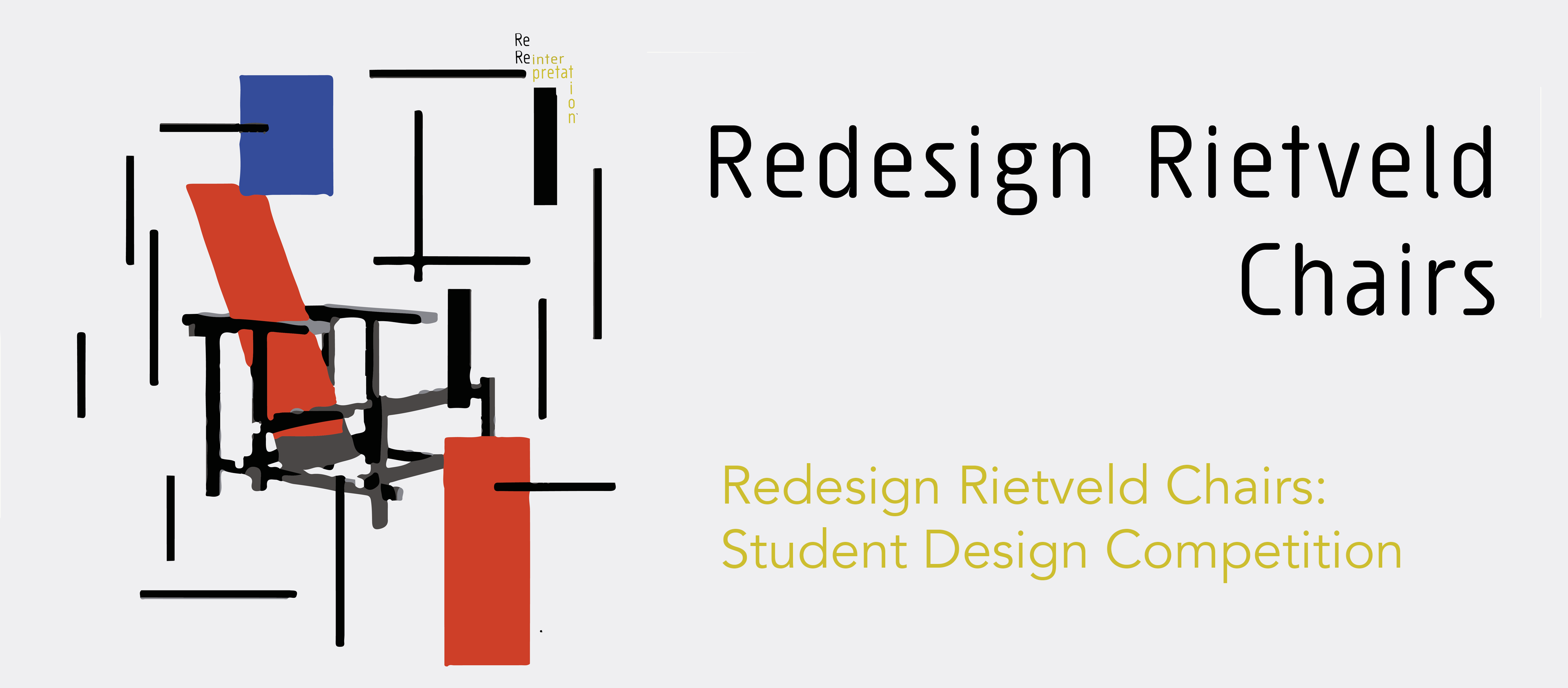
In early 2023, the TU Delft Library hosted the Redesign Rietveld exhibition, which offered model examples of homages and reinterpretations of Gerrit Rietveld chairs. A student design contest for virtual chairs inspired by Rietveld was part of the associated Re:Re:interpretation program. This website presents and archives the winners and selected entries of the competition.
This ‘tête-à-tête’, swing-bench brings people together to chat, snack, and/or swing as it hangs from the trussed faculty ceiling. This chair honours the original Reitveld, simply but playfully iterating (while alternately mirroring) the design to encourage conversation.
Lengths of certain timber members have been elongated and rearranged in order to span the width of the new conversation chair. The armrests are shared between those seated to one’s left and right, evolving what was once a chair for an individual into a chair for many.
This version of the Red & Blue reinterprets it as a double seater bringing the 100-year classic to the age of circularity and space shortage, pulling inspiration from the design of the Schröder house and keeping the exact same elements from the very original design with no extra additions.
This interpretation is inspired by two of the best-known chairs Rietveld made: the Rood-Blauwe stoel and the Zig Zag stoel. The former is reflected in the seat and the back, which can be seen as the essence of the original work. The colours speak for themselves. The influence of the latter comes from its shape which is incorporated freely in the design. An attempt has been made to give these elements a contemporary look. For the materials, the construction supporting the chair is made from painted aluminium, while the seat and back are made of polyurethane.
My proposal redesigns the Rietveld chair as an office chair with wheels, recycled plastic seat and backrest, using primary colors from the initial proposal. The colors add a playful and energetic touch to the chair, making it stand out and adding a touch of personality to any working space. Incorporating recycled plastic material aligns with sustainable design principles, while adding wheels provides ease of movement, enhancing its functionality.
Inspired by Piet Mondrian’s “New York City” painting, the chair is a unique variation of the Rietveld chair. The seating plane features a striking composition of criss-cross stripes in bold red, blue, and yellow colours. This chair’s practical design makes it an ideal choice for various events, particularly seminars. Not only is it stackable, but it also includes a convenient top rail for easy transportation. The gaps between the chair slats cast beautiful shadows, and when multiple chairs are stacked together, their colourful stripes overlap, creating a new dimension that embodies the spatial indications of the painting.
I was inspired by Rietveld’s designs, which are complex, yet feel unstable, even incomplete. These reactions caused me to think does furniture need to function as a chair or not.
The seemingly floating, yellow surfaces on the black-painted elements of Rietveld’s Red & Blue chair inspired the design of the Floating Chair. Instead of floating surfaces, this chair has a floating yellow upper construction and a black base construction. To allow for maximum comfort, a matching footstool has been designed as well.